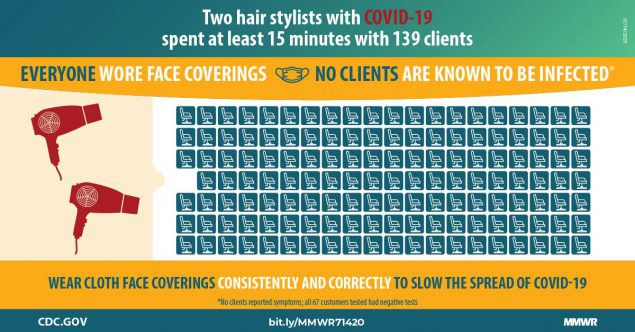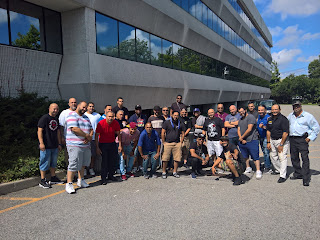New York State Governor Andrew Cuomo announced that public schools can decide to open as long as they are in a region where the average rate of positive coronavirus tests is below 5 percent over a two-week period. To read Governor Cuomo's announcement click here. It is interesting to note that still means School Districts will have to figure out how to open, handle busing, and all the other parts of the schooling process. There is plenty of information that indicates that children are very efficient spreaders of viruses. Forbes magazine recently published an article "New Evidence Suggests Young Children Spread Covid-19 More Efficiently Than Adults", which is about two studies, one published in The Journal of the American Medical Association (JAMA) and the other is a pre-print manuscript awaiting peer-review. The JAMA study shows young children who have mild to moderate Covid-19 symptoms have 10 to 100 times as much SARS-CoV-2 in the nasopharynx as older children and adults. The other study showed that children age 14 and younger risk of transmitting Covid-19 was 22.4 percent—more than twice that of adults aged 30 to 49, whose rate of contagiousness was about 11 percent. As an industrial hygienist and a certified indoor environmental consultant, we believe school administration/boards of education need to use some basic industrial hygiene and indoor air quality principles to open safely. It will mean that quite a few things need to change to be able to keep students, teachers, and staff safe. Like any basic industrial hygiene problem, we should use the hierarchy of controls to protect workers by reducing the potential exposure to SARS-CoV-2.
The first hierarchy of control is the elimination or the substitution of the hazard. This control is about prevention if we can eliminate the exposure then we eliminate the hazard. So if we can make sure individuals with Covid-19 do not attend school we can eliminate the exposure. To accomplish this most facilities are doing a combination of questionnaires and temperature taking to ensure people who are sick stay home and out of the workplace. However, this does not capture asymptomatic individuals who can also spread SARS-CoV-2. A recent study discussed in STAT's article "Fever checks are a flawed way to flag Covid-19 cases", indicated that Covid-19 patients were 27 times more likely than others to have lost their sense of smell. But they were only 2.6 times more likely to have fever or chills, suggesting that anosmia (the loss of sense of smell) produces a clearer signal and may, therefore, be a better Covid-19 catching net than fever. The idea of using a smell test is supported by a USA Today article "Why do so many COVID-19 patients lose their sense of smell? Scientists now know." Testing to determine if an individual has lost their sense of smell can be done in several ways (for example, having a person smell a scratch-and-sniff card and pick the correct odor out of four choices) with the gold standard being the University of Pennsylvania Smell Identification Test called UPSIT. The scents are released by scratching the microencapsulated scents with a pencil. The test taker has a choice of 4 answers for each and the test takes 10 to 15 minutes. This would prevent individuals from entering the school and hence eliminate the hazard. Unfortunately, it doesn't totally eliminate the hazard. So we must add additional controls to continue to reduce the exposure.
 |
| SARS-CoV-2 |
The next level of control would be engineering controls. According to the Environmental Protection Agency (EPA)'s website "Indoor Air and Coronavirus (COVID-19)" there is growing evidence that the SARS-CoV-2 remains airborne in indoor environments for hours, potentially increasing in concentration over time. Due to this evidence, we would use the engineering controls ventilation (bringing fresh air from outside) and air filtration (removing the virus from the air inside the building) to reduce the potential exposure to SARS-CoV-2. The purpose of the heating ventilation and air conditioning (HVAC) system of a building is to bring fresh air from outside the building to dilute the contaminants that may build-up in a building. Humans produce CO2 and body odor plus other contaminants (i.e., moisture, if we're sick viruses & bacteria) and other processes in the building produce other contaminants (i.e., cleaning chemicals, copiers, uncontrolled moisture can produce mold, etc.). The HVAC system should be designed to reduce these contaminants and provide a certain amount of fresh air per person in the building. When we are concerned about the indoor air quality (IAQ) of a space we use carbon dioxide (CO2) as an indicator of how well the ventilation system is ventilating a space. In other words how well the ventilation system, is reducing the contaminants in the space. The American Society of Heating, Refrigeration, Air-Conditioning Engineers (ASHRAE) publishes a standard 62.1-2010 "Ventilation for Acceptable Indoor Air Quality" as a guideline for determining acceptable IAQ (for the purposes of comfort). This guideline recommends maintaining CO2 levels in a space no greater than 700 parts per million (ppm) above outdoor air levels. However, a recent article in The Conversation titled "How to use ventilation and air filtration to prevent the spread of coronavirus indoors" discusses research that showed the effects of ventilation on a tuberculosis outbreak at Taipei University. The study showed when engineers improved air circulation in the rooms and got the CO2 levels in the rooms reduced to under 600 ppm (from above 3,000 ppm) the outbreak stopped. This shows that if we use CO2 detectors in rooms to ensure the rooms are properly ventilated and we can keep CO2 levels below 600 ppm we have a better chance of reducing transmission of the virus in these rooms. The same article also discusses using air cleaners for air filtration there are several items to understand when using air cleaners. First, you want an air cleaner that has a high-efficiency particulate air filter (HEPA) that is capable of filtering the particles at 99.97% of all particles at 5 microns and greater. The next thing to consider is how powerful it is and finally how reliable are its claims. The Conversation article provides some excellent links for the Association of Home Appliance Manufacturers (AHAM) that certifies air cleaners and a Harvard-Colorado University Boulder Air Cleaner Calculator for Schools tool for helping to decide the best air cleaner for a particular classroom. This too may not completely eliminate the hazard so we will have to go to the next control - Administrative and work practice controls.
 |
According to The Centers for Disease Control and Prevention (CDC)'s website "How COVID-19 Spreads" the virus is thought to spread mainly from person-to-person:
- Between people who are in close contact with one another (within about 6 feet).
- Through respiratory droplets produced when an infected person coughs, sneezes, or talks.
- These droplets can land in the mouths or noses of people who are nearby or possibly inhaled into the lungs.
- COVID-19 may be spread by people who are not showing symptoms.
- It may be possible that a person can get COVID-19 by touching a surface or object that has the virus on it and then touching their own mouth, nose, or possibly their eyes. This is not thought to be the main way the virus spreads.
The final level of control would be personal protective equipment (PPE). Though face coverings are not truly considered PPE but for the purposes of public health and the fact we want the person to wear something, we will take the liberty to consider it this level of control which is the last and least effective control.
If you have read our previous blog post "Filtering Facepiece Respirator or a Dust Mask or N95 Respirator versus a Surgical Mask" on the difference between N95 respirators/filtering facepieces/dust masks vs surgical masks. You know there is a big difference between surgical masks and N95 respirators. In our blog post, we mentioned face coverings but there still seems to be some confusion. We blame the media for not using consistent wording or terminology. They go back and forth utilizing the wording face coverings and masks. A face covering is not a mask (though they are now making things that look like a surgical mask but specifically say not for medical use (see picture above), which tells you that it is not a surgical mask but just a face covering). The Occupational Safety and Health Administration (OSHA) has a website devoted to "COVID-19 Frequently Asked Questions". This website has some basic points regarding cloth face coverings:
- May be commercially produced or improvised (i.e., homemade) garments, scarves, bandanas, or items made from t-shirts or other fabrics.
- Are worn in public over the nose and mouth to contain the wearer's potentially infectious respiratory droplets produced when an infected person coughs, sneezes, or talks and to limit the spread of SARS-CoV-2, the virus that causes Coronavirus Disease 2019 (COVID-19), to others.
- Are not considered personal protective equipment (PPE).
- Will not protect the wearer against airborne transmissible infectious agents due to loose fit and lack of seal or inadequate filtration.
- Are not appropriate substitutes for PPE such as respirators (e.g., N95 respirators) or medical face masks (e.g., surgical masks) in workplaces where respirators or face masks are recommended or required to protect the wearer.
- May be used by almost any worker, although those who have trouble breathing or are otherwise unable to put on or remove a mask without assistance should not wear one.
- May be disposable or reusable after proper washing.
More and more data continues to come in proving the value of wearing face coverings. The CDC's Morbidity and Mortality Weekly Report published a study "Absence of Apparent Transmission of SARS-CoV-2 from Two Stylists After Exposure at a Hair Salon with a Universal Face Covering Policy-Springfield, Missouri, May 2020". The results of that study are pictured above. Another article that discusses the benefits of face-coverings for protecting people from SARS-CoV2 is at the Fast Company website titled "Countries where everyone wore masks saw COVID death rates 100 times lower than projected". The CDC has a website called "Use of Cloth Face Coverings to Help Slow the Spread of COVID-19". This website provides information regarding cloth face coverings; how to wear cloth face coverings, considerations for wearing cloth face coverings, making cloth face coverings, and washing cloth face coverings.
By using the hierarchy of controls we discussed above, schools could open to in-person schooling. But these are significant changes to the way schools have been run for years. The question really is does the school have the resources to change and can it adapt to these changes. Very tough questions for administrators, teachers, and parents, and students.























